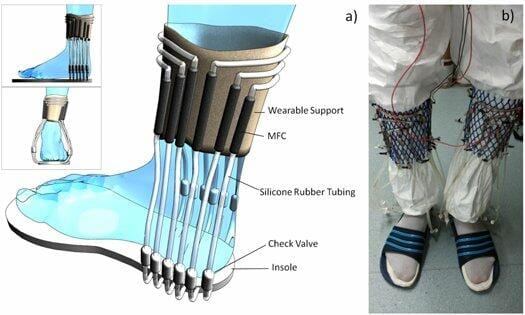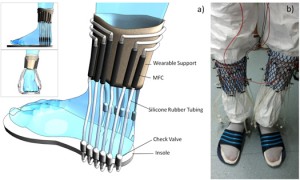Wireless Transmitter Powered by Urine and Microbes

Researchers from the University of the West of England (UWE) have created a wearable wireless transmitter powered with urine. The user carries microbial fuel cells (MFCs) in its socks, and the cells are fed with urine that is supplied by the user’s movement. The researchers were able to send a signal to a PC with the device. This is the first wearable energy generator based on MFCs. The study was published in the journal Bioinspiration and Biomimetics.
Portable electronics are ubiquitous nowadays, but a long-lasting power source for these devices remains elusive. Several energy sources have been tried such as solar, thermal, mechanical or electromagnetic. But waste products have received special attention, due to its wide availability. MFCs are bio-electrochemical systems that use bacteria to generate electricity: they capture electrons generated by bacteria to feed a battery anode. MFCs fueled with urine have already been used to power electronic devices, and portable MFCs have been developed, but they need a powered pump to feed the fuel to the biofilm community.
Carrying microbial fuel cells in your socks
Based on all these studies, Professor Ieropoulos and his team decided to design a wearable, urine-fueled MFC that could be powered by the user itself. They looked to nature for inspiration, and found it in the low-energy fluid circulation that happens in animals, specifically, in the fish circulatory system. The research team designed a foot-pumping system made of 24 MFCs embedded in a pair of socks, soft tubing and valves. The user’s walking movement worked as a pump that impulsed the urine through a single-loop circuit towards the MFCs, feeding the bacteria. The system generated enough energy to power a programmable transmitter board included in the design. 90 steps per minute generated a voltage of 4 V, enough to send electrical signals to a PC every two minutes.
This technology could open the door to generating self-sustainable, wearable electronics, reducing dependence on fossil fuels and transforming organic waste into a valuable resource.
Source: UWE

